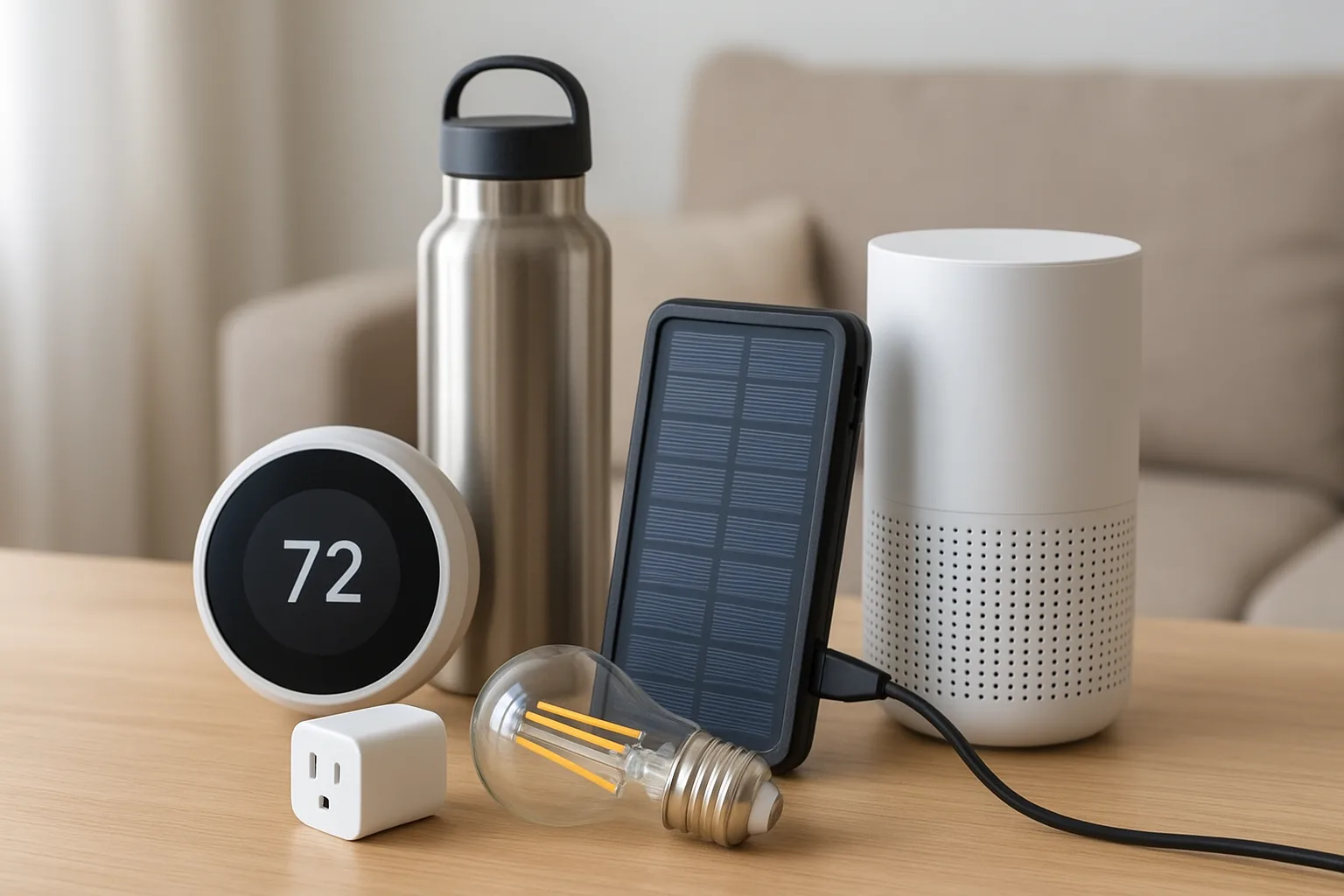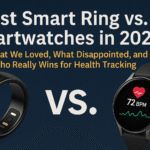“A Friendly 2025 Tour of Sustainable Tech Products at Home”
Table of Contents
Going green at home makes sense today – with rising energy bills and climate concerns, even small tech upgrades add up. For example, the average U.S. home spends over $900/year on heating and cooling, so a smart tweak can quickly pay back. Modern sustainable tech products turn everyday devices into money-savers. In this post we’ll walk through 10 easy gadget upgrades – from thermostats to smart plugs – that make a home more eco-friendly. Each one is like a little helper: smarter controls, less waste, and more comfort. Think of it as friendly advice from a pal on a journey to a greener, simpler life.
Smart Thermostats (Nest, Ecobee)
Smart thermostats like Nest or Ecobee learn your routine and let you adjust temps from your phone. They can auto-shift the heat or A/C when you leave for work (using geofencing) or overnight, so you’re not paying to heat an empty house. Because of that, they’re great green smart home devices.
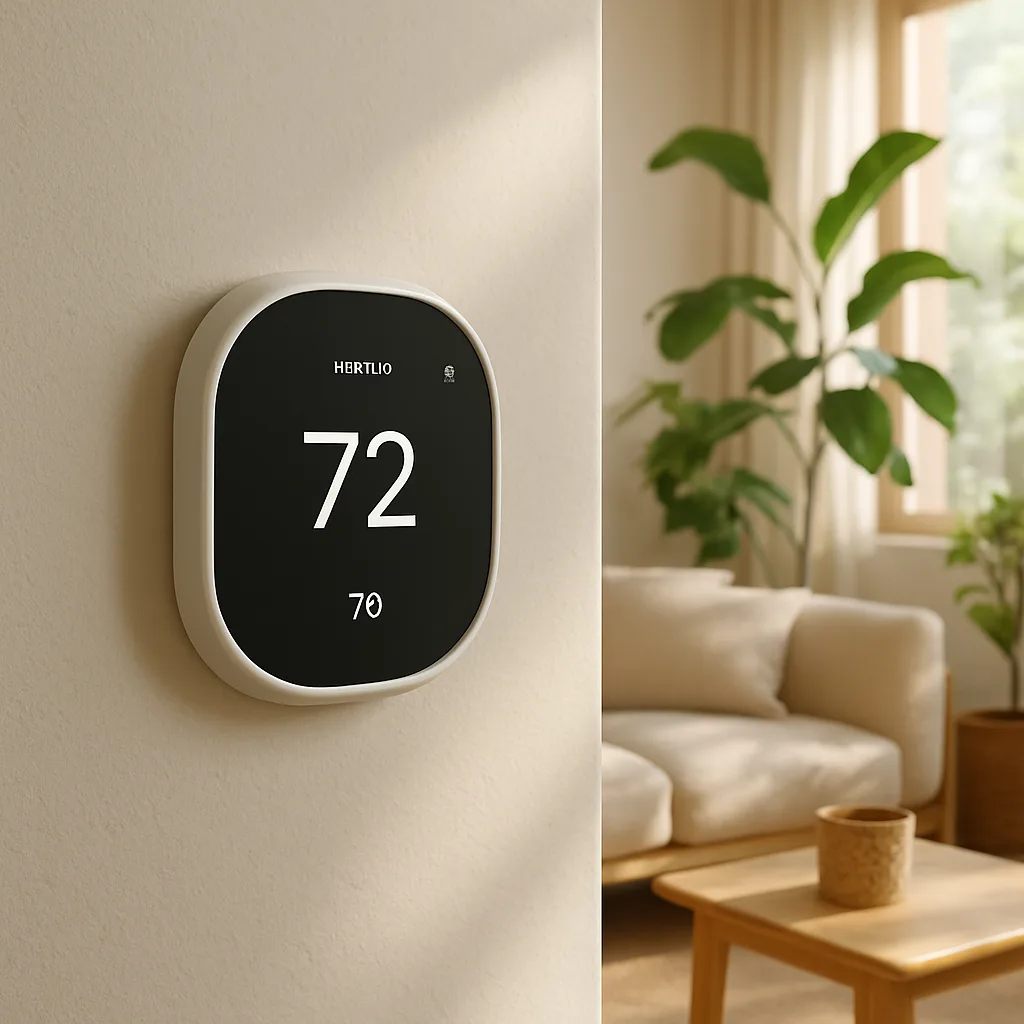
Studies show smart thermostats typically cut about 8–15% off heating/cooling bills (roughly $50–$140 per year). In plain terms: set it and forget it, and let the thermostat trim your bills and carbon footprint without you having to think about it.
Solar-Powered Chargers
A solar charger is basically a battery pack with a tiny panel on it. Set it in the sun (even on a window sill or patio), and it tops up your phone or power bank with free sunlight
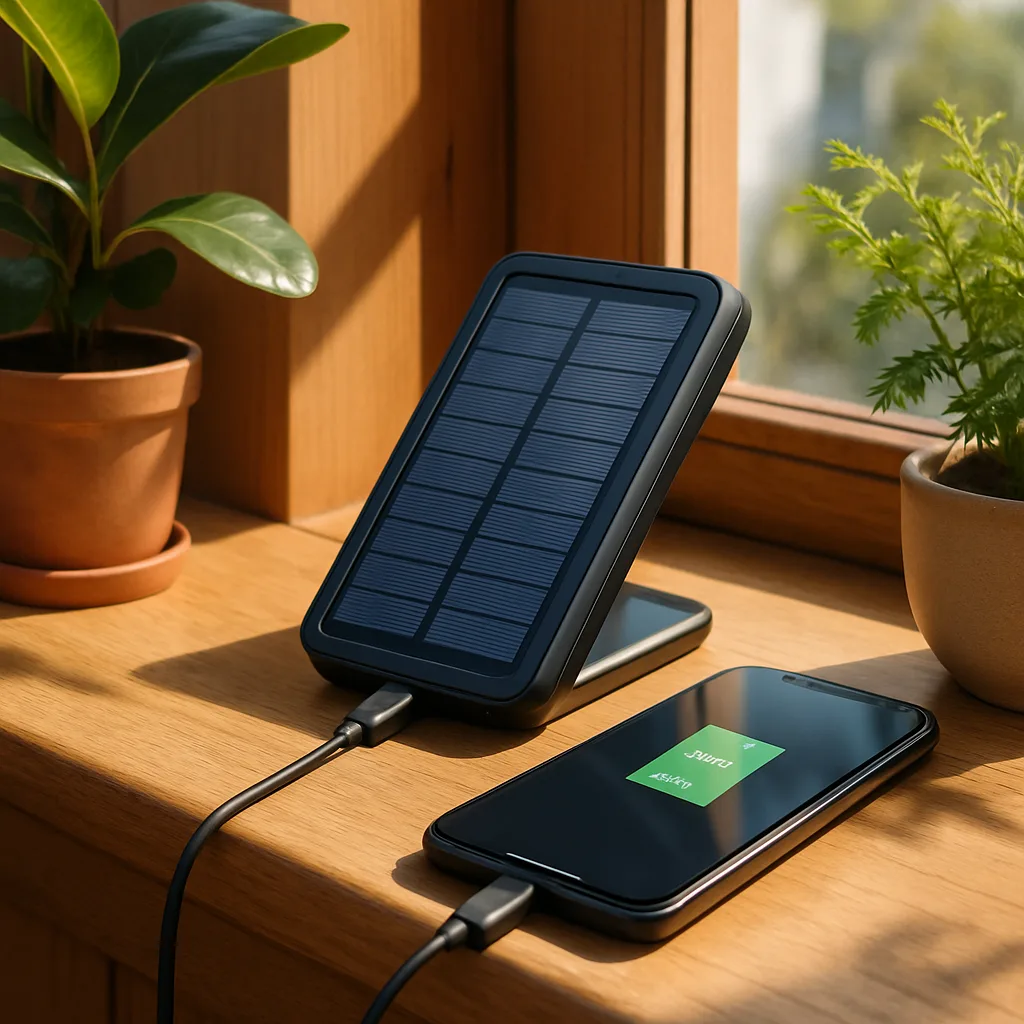
. This eco-friendly gadget “reduces reliance on fossil fuels” and your carbon footprint, since it pulls no electricity from the grid. After the initial buy, the “fuel” is free: as one review notes, once it’s paid for itself, “you won’t have to spend on electricity” for charging It’s handy for camping or emergencies too – and a small step toward greener power for your devices.
Energy-Efficient Smart Bulbs
These are LED bulbs you can dim, color-tune, or schedule via an app. The big win is efficiency: LEDs use vastly less electricity than old bulbs. In fact, DOE notes “LEDs use up to 90% less energy and last up to 25 times longer” than incandescents.
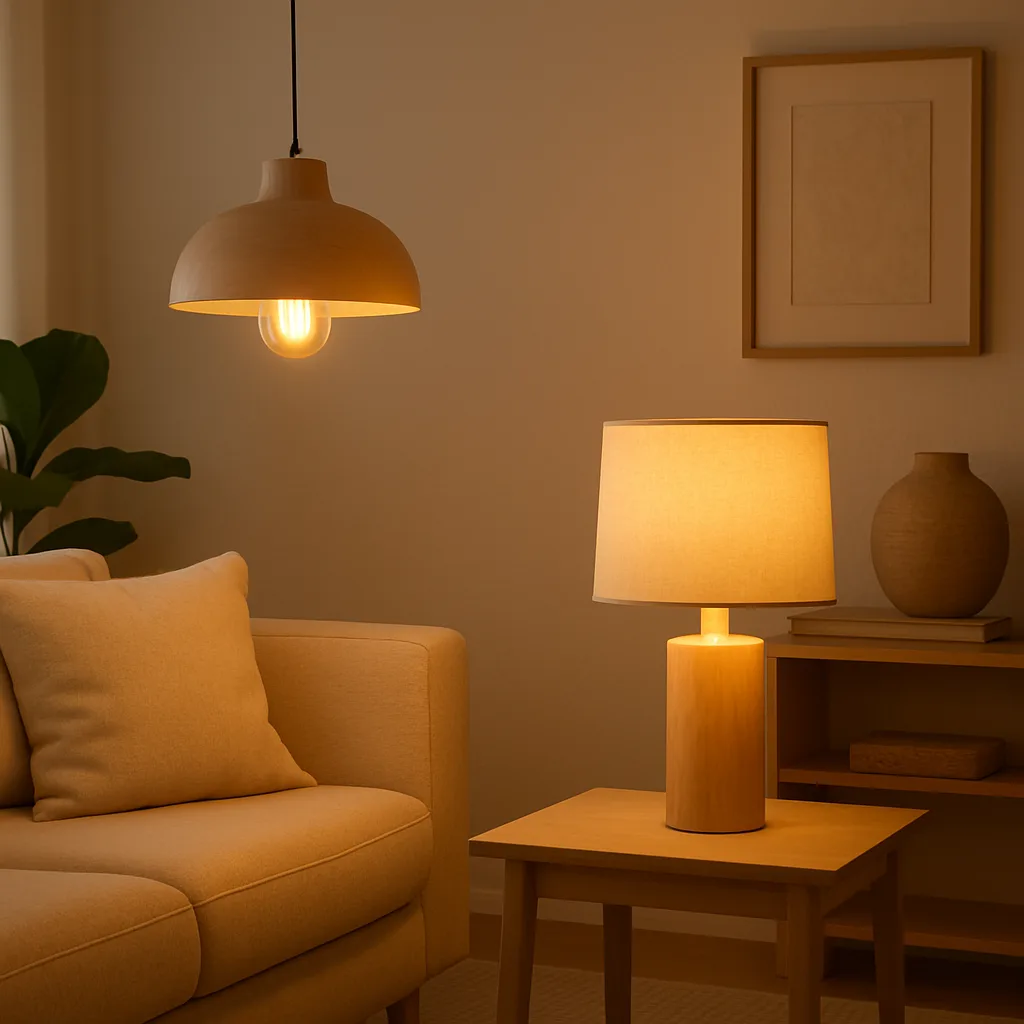
On top of that, smart bulbs often pair with timers or motion sensors so lights only run when needed. In practice this means you get bright, cozy light at pennies on the dollar. Swapping to LED smart bulbs is an easy “bang for buck” move in a green home – the lights feel just as nice, but your lighting costs shrink dramatically.
Water-Saving Shower Systems
Showers can gulp a lot of water (and energy to heat it), so saving there makes a big difference. Modern low-flow showerheads (WaterSense-certified) cap the flow around 2.0 gallons per minute. The EPA says an average family can save about 2,700 gallons of water per year by using these heads – and that also cuts roughly 330 kWh of heating energy (the cost to heat that water).
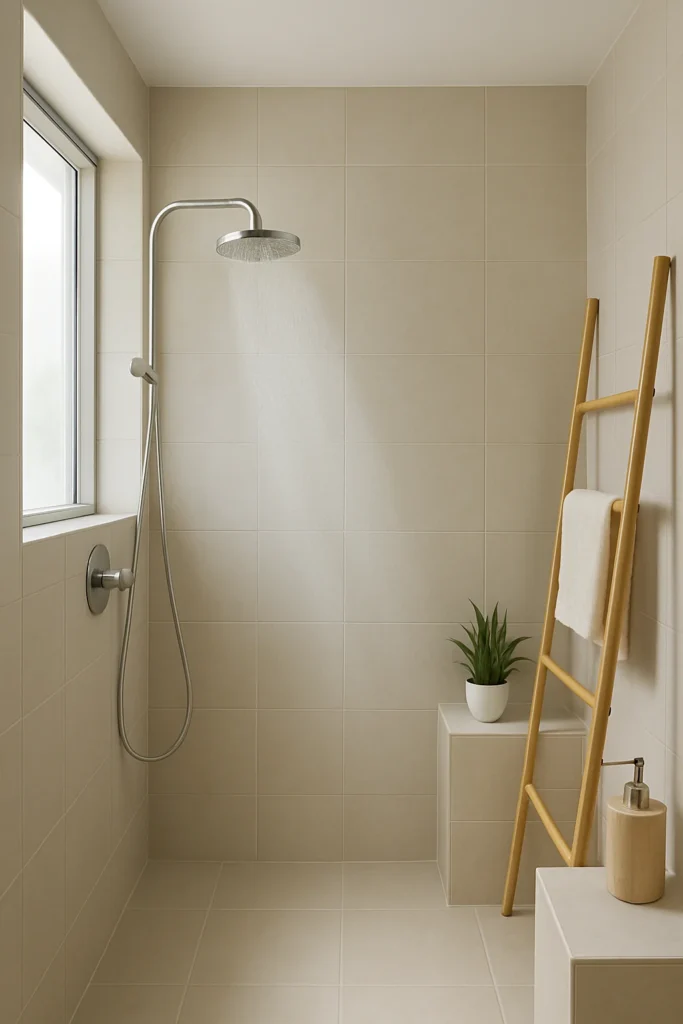
Some new shower designs take it further: for example, Nebia’s nozzle tech sprays water as fine droplets so it feels powerful while using ~50% less water than a standard head. In short, you still get a satisfying hot shower, but with far less waste. That means lower water and gas/electric bills – and a smaller eco-footprint – every morning.
Recycled/Repairable Tech (Fairphone, Eco Laptops)
Not all gadgets are built the same. Some are made from recycled or “fair” materials so they have a second life. Take Fairphone, a modular smartphone: its latest model is made from over 50% recycled or fair‑mined parts, and about 93% of its plastic is post-consumer recycled. It’s also designed to be easy to fix or upgrade, so you don’t throw it away if one part breaks.

On the laptop side, brands like Acer’s Vero use recycled plastics (even oyster-shell bioplastic!) for their cases. These gadgets cost a bit more upfront, but they turn trash into tech and make recycling a part of your setup. In a nutshell, they’re sustainable tech products built with the planet in mind.
Smart Plugs (Energy Tracking)
Got old appliances or chargers that draw power even when “off”? Smart plugs fix that. These little adapters plug into your outlet and connect to Wi-Fi. Now you can switch an appliance on/off from your phone or on a schedule. Many models also track energy use, so you see exactly how many watts a lamp or TV uses.
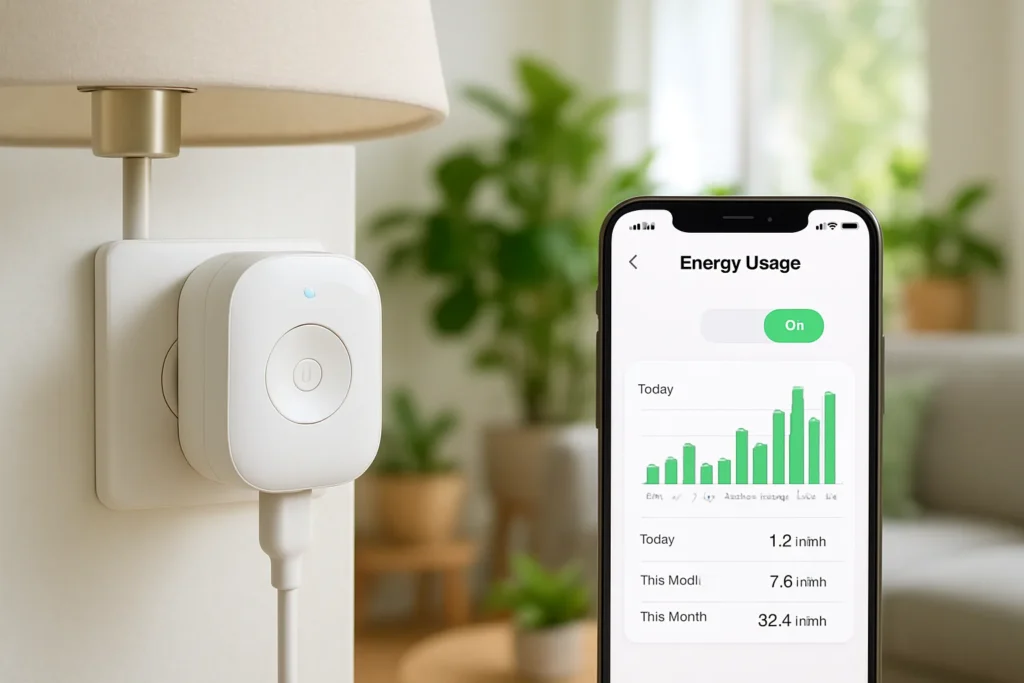
This helps kill “vampire” loads – even idle devices can consume 5–10% of home electricity. With a smart plug, you can auto-cut power to a TV at bedtime or schedule lights out during work hours. It’s one of those hands-off eco-friendly gadgets that ends up paying for itself by trimming waste (and, by the way, helping you spot any surprise energy hogs).
Home Energy Monitors
No image – but imagine it like a FitBit for your whole house. A home energy monitor (brands like Sense or Emporia) wires into your electrical panel and reports usage in real time. The app shows total consumption and can break it down by circuit or appliance.
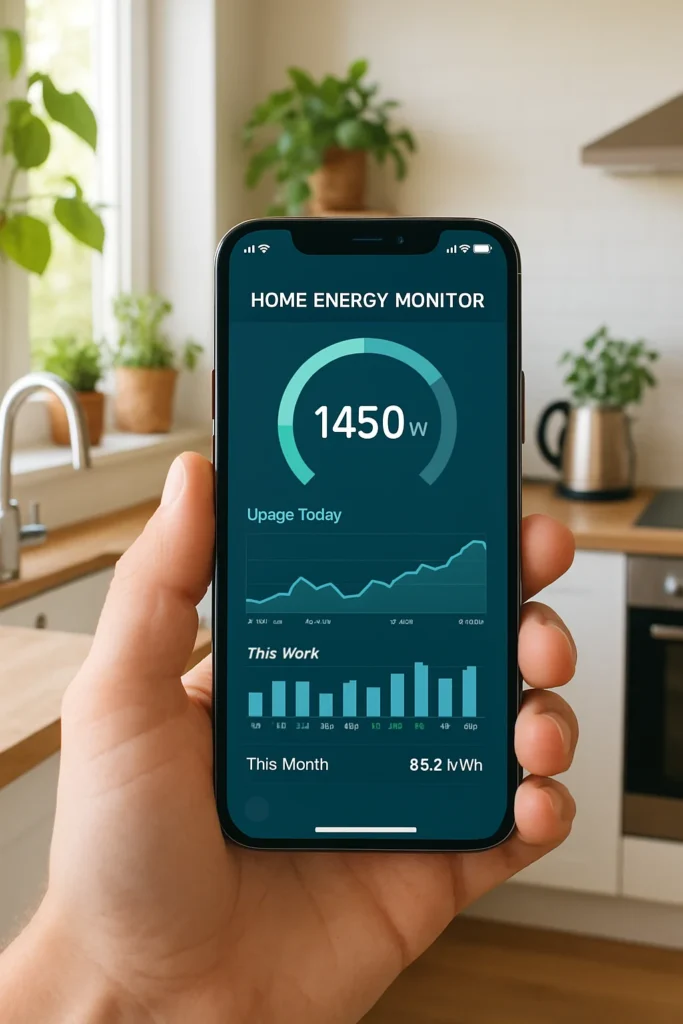
This level of insight can be eye-opening: for example, you might discover an old fridge is costing $100 a year, or that your gaming PC never really powers down. As EnergySage explains, monitors give you “actionable insights” to help save money. In practice, seeing those live numbers often prompts simple changes: unplugging that sneaky charger or running the dryer at night. The monitor alerts you to waste, so you can fix it and shrink your bills.
Solar-Powered Outdoor Lights
No wiring, no electric bill: just solar panels, batteries and LEDs. Outdoor solar lights (garden stakes, string lights, etc.) soak up sun by day and glow by night. The key is efficient LEDs – in general LEDs use over 75% less energy than incandescent bulbs and last 50,000+ hours – so the small panels only need to capture a little power to run them all night.
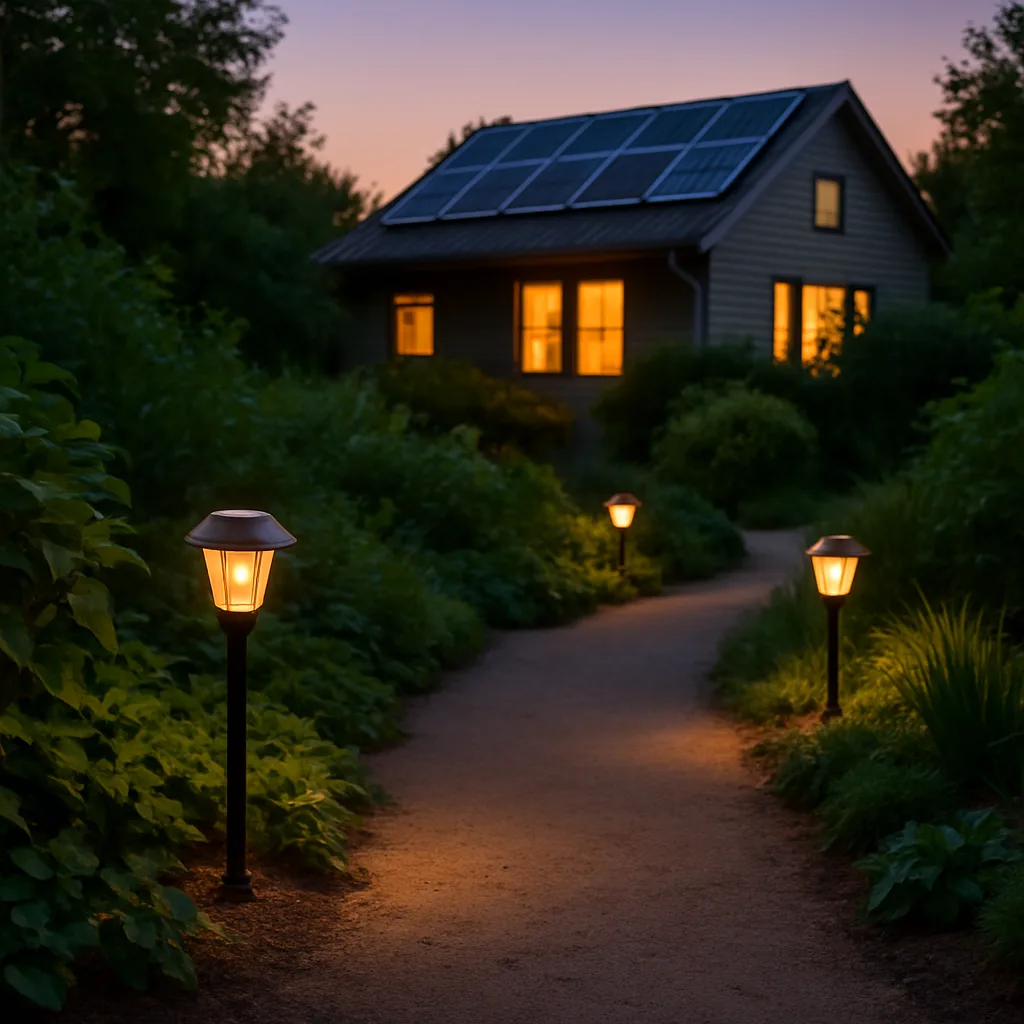
Many solar lights have light or motion sensors, so they shine only when it’s dark or someone is nearby. The upshot: you get all the ambiance of yard or porch lighting without pumping extra watts into your meter. It’s a no-brainer green smart home device for brightening your nights while keeping energy and maintenance near zero.
Air-Purifying Gadgets
Fresh air can be eco-friendly too. Air purifiers (HEPA filters, activated carbon, etc.) trap dust, pollen, mold and odors. The benefit? You can keep doors and windows closed and let the purifier circulate clean air. As one sustainability guide notes, air purifiers help “reduce the need for outdoor air” and let you skip chemical air fresheners.
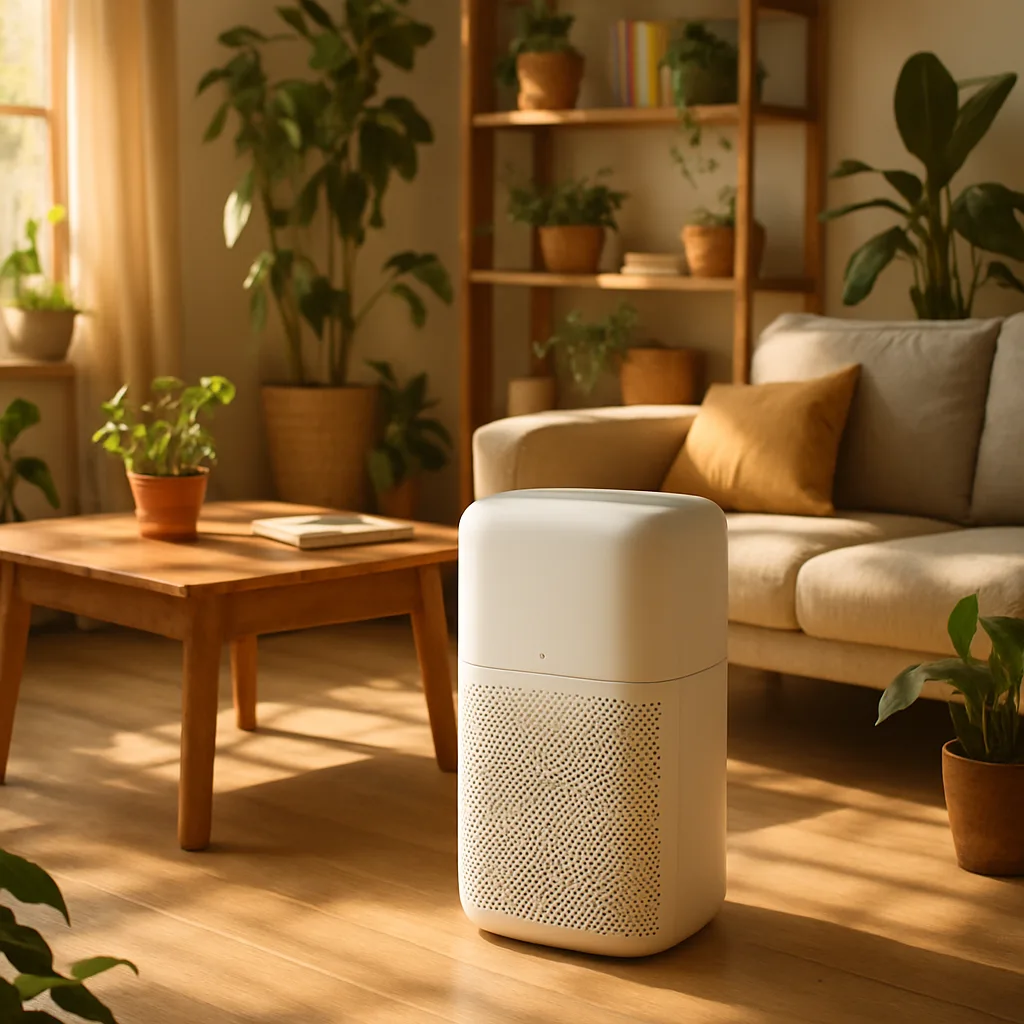
In other words, your HVAC works less hard to cool/heat outside air, and you’re not using aerosol sprays indoors. Modern purifiers are built to be energy-efficient in auto mode, so they don’t guzzle power. The result: healthier indoor air without pumping extra CO₂ or pollutants outside. It’s an indoor gadget that makes your home feel better and runs green too.
Reusable Kitchen Tech (Induction & Coffee Pods)
Finally, let’s tackle the kitchen. Swap your gas or coil stove for induction cooking: induction heats pots via magnets, so almost no energy is lost heating the air. DOE notes induction ranges are roughly 3× more efficient than gas stoves (and a bit more efficient than regular electric). You’ll cook faster and use less power, plus you lose the indoor gas fumes (better health too!).
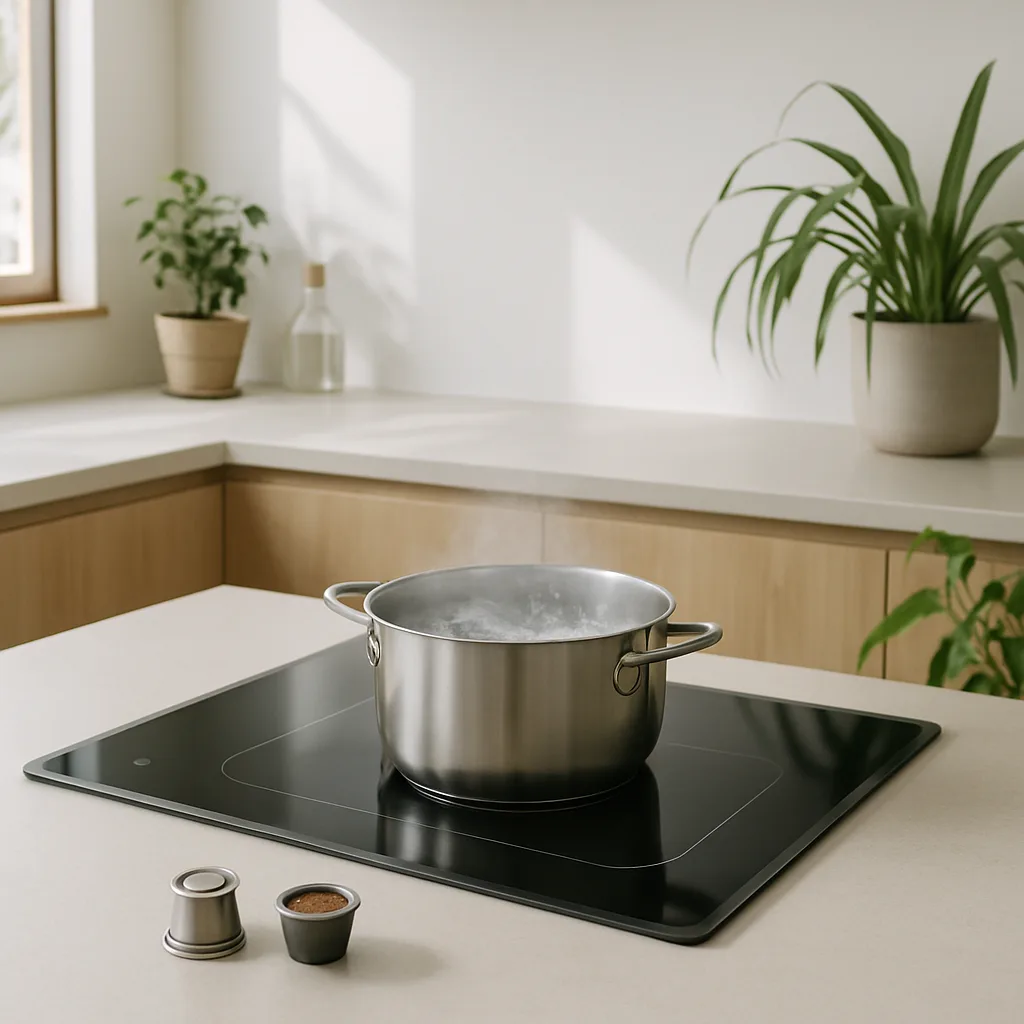
For coffee, ditch disposable capsules. Use a stainless-reusable pod or compostable filter instead. You get the same quick single-cup brew with zero plastic waste. Research even found pods can be more efficient in coffee usage – they meter out just the right amount of grounds and water. All that means less wasted coffee and no plastic pod landfill, while your morning brew tastes just as good.
Conclusion
These green smart home devices aren’t just good for the planet – they boost comfort and can shave real dollars off your bills. For example, Energy Star notes a smart thermostat alone saves about $50/year. And LEDs or efficient appliances stack up savings over their lifetime. You don’t have to buy all 10 gadgets at once. Start with one or two upgrades—say, swapping a bulb or adding a smart plug—and build up slowly. Each little change (each sustainable tech product) adds up to a big impact over time. Step by step, your home gets comfier and cleaner, and your wallet and the environment will thank you.

